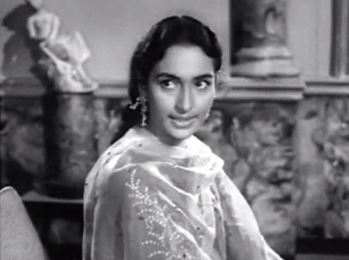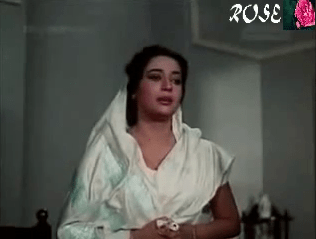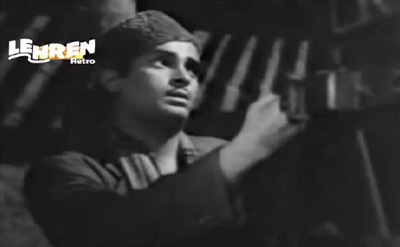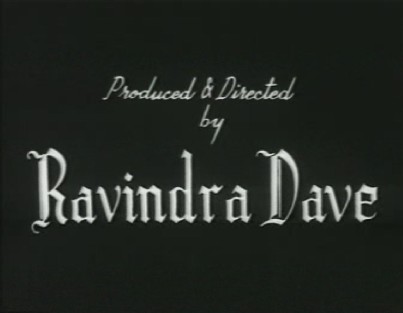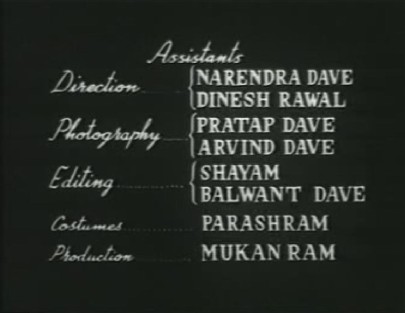Sometime last month, I discovered that one of my favourite music directors would have celebrated his birthday centenary this year. Born Roshanlal Nagrath on July 14, 1917, in Gujranwala (now in Pakistan), Roshan played the esraj for All India Radio, Delhi for about 10 years (during which he also composed music for various programmes) before moving to Bombay to try his luck in the world of cinema. Roshan’s career as a music director took off fairly soon afterwards, with the resounding success of the score of Baawre Nain (1950); he went on to compose music for over 50 films until his death in 1967.
Tag Archives: Roshan
Noorjehan (1967)
Give me a period film, and I’m willing to give it a shot. If it happens to be set in Mughal India, so much the better. If the cast features people like Meena Kumari, Pradeep Kumar, Rehman, Veena, Lalita Pawar and Nighar Sultana: well, there’s hope that the acting will be passable. And when I realize that the music composer is Roshan: then I’m certainly on for it.
Noorjehan, of course (though Richard would probably question that ‘of course’) is about the noblewoman who married the fourth of the Great Mughals, Jahangir. Born in May 1577 and named Mehrunissa, she was the daughter of a man who rose to great prominence in the Mughal court: Itmad-ud-Daulah (‘Pillar of the State’) was the title given to him, and the marriage of Mehrunissa to Jahangir made of Mehrunissa a powerful woman, too. Initially given the title Noormahal (‘Light of the Palace’) by her doting husband, she was subsequently given the title of Noorjehan (‘Light of the World’) and went on to become probably the most influential of imperial consorts in the Mughal dynasty, a wealthy woman in her own right, as well as a woman who exercised a good deal of power from beyond the purdah.
Dil Hi Toh Hai (1963)
Some months back, I watched two relatively new Muslim socials: Daawat-e-Ishq and Bobby Jasoos. Both were an interesting reflection on the way the Muslim social has changed over the years (after close to disappearing during the 90s). The Muslim social of the 1950s was, more often than not, a film that, even when set amongst the wealthy upper class—the nawabs and their kin—came heavily burdened with all the stereotypical trappings of what was perceived as ‘Muslim’: the qawwalis and mushairas, the shararas and sherwanis. (I’ll write about all of those, and more, in a post to follow).
Bobby Jasoos and Daawat-e-Ishq had shed those to quite an extent. But that process had begun in earlier films, even as far back as the 60s. In Neend Hamaari Khwaab Tumhaare, for example, where Nanda’s character—the daughter of a nawab, no less—doesn’t merely have a Western education, but spends most of her time in skirts and dresses. And this film, where Nutan’s Jameela is a firebrand, giving as good as she gets, and by no means the simpering and demure Muslim girl exemplified by her contemporaries in films like Mere Mehboob, Mere Huzoor, and Chandni Chowk.
Bahu Begum (1967)
…which could probably have been more appropriately titled How to Jump to Conclusions and Mess up Lives. Or Never Trust a Sinister Mamu. This is one Muslim social – a genre I have long admitted to being very fond of – which has been recommended to me so often, I’ve lost track of the recommendations. On the one hand, I wanted to see it because it has some lovely songs; on the other, the thought of watching Meena Kumari in one of her last few films – well, that wasn’t something I was really looking forward to with anticipation. But all those recommendations tilted the balance.
Mamta (1966)
While watching Pakeezah some months back (and reading Meghnad Desai’s book about the film), I was struck by how fond old Hindi cinema used to be of the motif of the ‘chaste tawaif’. A paradox, seemingly, because how could a woman be a tawaif – a prostitute, to put it bluntly – and be chaste? But films like Pakeezah and Adalat did just that: they portrayed women who lived in kothas, sang (in Adalat) and danced (in Pakeezah) but were ‘good’ women, chaste and pure, women who may have been lusted after by bad men, but who – thanks to fate, good friends and relatives, kind strangers (both human and animal) – were always able to avoid the fate worse than death: of yielding their chastity to a man they were not married to, or weren’t going to eventually marry, even if only in secret.
Rangeen Raatein (1956)
The main reason I wanted to see this film was that it starred Shammi Kapoor and Geeta Bali—and her not in a mere item number, as in Mujrim, but in a much more substantial role.
Unfortunately, what I didn’t realise was that it’s Mala Sinha who’s paired with Shammi Kapoor in Rangeen Raatein, while Geeta Bali is in the role of a man [what was the director Kidar Sharma thinking of?!]
Ten of my favourite filmi qawwalis
I have been meaning to write this post for a long time now—I love qawwalis—but I’ve kept putting it off, because I’ve always thought that it would be impossible to create a list of just ten filmi qawwalis that are my favourites. (Barsaat ki Raat itself features at least three qawwalis that completely bowl me over).
But. I’ve finally decided to take up the challenge, and do it. These are ten fabulous qawwalis from pre-70s films that I’ve seen (though I must confess that I like the qawwalis of some 70s films—especially Rishi Kapoor ones). To make this post a little more challenging, I decided not to include more than one qawwali per film.
Taj Mahal (1963)
I ended up re-watching this film in a roundabout sort of way, which is a story in itself. A few months back, my sister (a historian, whose PhD was on 19th century Delhi) remarked, “I’d like to watch Lal Qila. I’ve never been able to find it in stores.” So, good little sister that I am (and a shameless opportunist), I figured out at least one of the things I’d gift my sister for Christmas.
Before gift-wrapping the VCD, I decided to watch Lal Qila, and write up a review right after. The latter didn’t happen – because Lal Qila is so badly written, so badly directed, and such a crashing bore, I couldn’t make head or tail of it most of the time. Only Rafi’s superb renditions of Bahadur Shah Zafar’s poetry – especially Na kisi ki aankh ka noor hoon – are a saving grace.
I was so peeved and disappointed after Lal Qila, that I needed this to buoy myself up. In any case, I told myself: logically, the two films are related (other than the fact that both feature Helen): the Lal Qila and the Taj Mahal were both built by Shahjahan.
Here we go, then. One of Hindi cinema’s better historicals, with a stellar cast and very good music.
Ten of my favourite ghoda-gaadi songs
This post is dedicated not just to music directors like O P Nayyar and Naushad (who made ‘tonga beats’ an important musical style), but also to friend and blog reader pacifist, who came up with the idea. Writing to me some weeks back, pacifist made a request: that I do a list of horse-drawn vehicle songs.
So: here’s the list, pacifist. Ten of my favourite ghoda-gaadi songs, from pre-70s films that I’ve seen. Other than that, my requisites for the selected songs were:
1. That the person singing (on screen, that is) remains in the ghoda-gaadi through at least 80% of the song (which is why Ae dil hai mushkil doesn’t feature in this list).
2. Horse-drawn vehicles of all types qualify: tongas, Victorias, phaetons, even chariots. Horseback is out.
3. And, no two songs from the same film are allowed.
Agra Road (1957)
I should have smelt something fishy when I saw this:
That looks like Ravindra Dave was doing all his unemployed relatives a favour. Or, more ominous, he’d cut corners and employed people whom he could bully into accepting fees in kind—Diwali dinners hosted at the Ravindra Dave home?
Two hours down the line, and I am certain that Ravindra Dave didn’t really have the money to have been making a full-length film. A short, perhaps; but not this.



